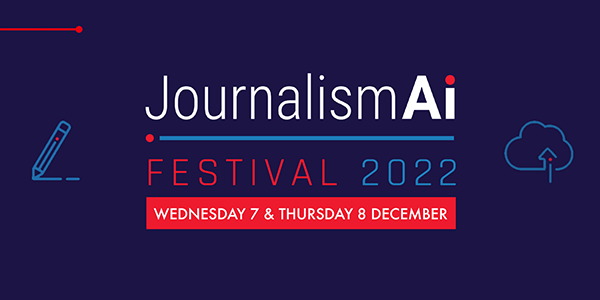|
Getting your Trinity Audio player ready...
|
Matt White, VP of Quantcast explains why artificial intelligence is so dependent on the correct data inputs as well as clearly aligned business goals. As he explains, artificial intelligence is goal-oriented and ruthless so advertisers, ad tech vendors and publishers need to tread carefully. Get it right, however, and the benefits are clear…
When I talk to publishers, there is excitement around AI’s possibilities, along with a nearly endless set of questions. There are numerous areas where AI can help bolster data-driven marketing and content while either eliminating cumbersome and tedious tasks or extracting valuable insights. Unsure about what exactly AI is and how you should think about using it? Here are the basics…
In our world, AI is primarily about computational assistance and not about machines replicating human intelligence. So, what is computational assistance?
In the broadest sense, this phrase refers to software and tools designed to process large amounts of data in rational ways – based on specific goals or criteria. Think about the difference between machine-shaped problems versus human-shaped problems. Certainly, humans can scan a website or two in a few short seconds to determine what that site’s content generally consists of. However, there are millions of websites out there, and as we know, humans don’t like repetition or tedium. They get tired and make mistakes. This is and no doubt will be viewed as a vitally important area for publishers. Ensuring advertisers and marketers have access to in-depth data on who they’d reach by advertising on publisher platforms can increase the likelihood of successful and repeated advertising campaigns – especially given the rise of programmatic.
It’s important to understand a key aspect of computational assistance programs: these systems are ruthless. AI is always entirely and singularly goal-oriented. Whatever you tell an algorithm to optimize towards, it will orient all of its computational power toward that end – you need to know your goals. On that note, here are the top questions publishers should ask when applying computational assistance:
Is the data needed available and trustworthy?
As you can imagine, publishers need reassurance that the data they receive on the readers visiting their site is trustworthy and consented. If publishers are able to provide marketers with data that is representative of web users, they can utilize AI to the fullest. If the data collection is not fully representative then the marketer’s decision-making and every facet of their campaign will be based on faulty insights and actions, which can lead to mistakes worth millions.
In an ideal world, publishers should use technology that analyses their readership, relying on first-party data rather than third-party cookies, which can provide insight that’s weeks or even months old. This is particularly pertinent when you consider that publishers work in the now, focusing largely on breaking news, sports results, etc.
What do marketing clients really want these adverts to achieve? How will they measure success?
When I talk to CMOs about computational assistance, I try to emphasize that their single most important piece of data input is what they consider true business success. Knowing that will drive all other decisions. This is a conversation publishers should be having too, as it’s central to helping marketers build a successful campaign on their platform.
For example, say they choose to optimize toward real conversions of women within the 18-24 demographic. If they look to do so on a website that is popular with a broad demographic yet attracts the perfect target audience to a particular section at a particular time, the publisher needs to showcase the in-depth data to highlight exactly when, where and how the optimum campaign structure should be built. Of course, programmatic advertising can largely automate this, if the publisher provides the necessary level of real-time data.
It’s also important to seek out any potential obstacles to this success where AI is involved. One such area is brand safety, as many systems use questionable keyword-blocking platforms which can negatively impact a publisher’s revenue. For example, there have been times when inappropriate terms are added by partners which end up blocking a certain demographic or ethnicity as a whole from viewing adverts. There needs to be transparency here around which words are blocked, and regular checks that unnecessary terms aren’t slipping through the net.
What are the possible unintended consequences of using AI to reach this goal?
Think back to when viewability went from a buzzword in digital advertising to something that numerous vendors were promising to track. Virtually every major brand was insisting it become a key way of pricing and evaluating campaigns. You might have thought, what could go wrong in terms of making sure that ads could actually be seen by people?
Well, many adtech companies steered their software toward optimizing ads that appeared at the top of pages, then publishers followed suit. Suddenly every piece of content and ad below a certain part of a site was devalued. This wasn’t good for the consumer experience, for brands or the publisher’s revenue, and it soon became clear that changes had to be made to the AI being implemented in order to make viewability work – but the damage had already been done.
The Power of AI
The data available for marketers has the potential to alter the economics of entire markets. This technology is quite powerful, and with it comes a great deal of responsibility. For this reason, publishers, agencies and adtech partners need to think through potential scenarios before diving into AI.
Remember, machines have no context and no ethics. That’s where humans remain critical, and it’s why I’m not worried about our work ever being replaced by “the machines.” At the end of the day, we will continue to do what we do best – think, prepare, innovate and learn.
Matt White
Vice President, Quantcast
Quantcast is an audience intelligence and measurement company headquartered in San Francisco. Combining machine learning, a privacy-by-design approach, and live data drawn from more than 100 million online destinations, Quantcast provides software, information and advertising services for marketers, publishers and advertising agencies worldwide. Founded in 2006, Quantcast has employees in 20 offices across 10 countries.



